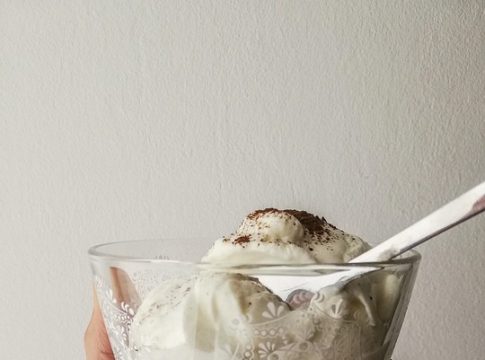In today’s health-conscious world, clean eating has become a buzzword, often surrounded by misconceptions. Many people strive to adopt a clean eating lifestyle, believing that it will lead to optimal health. However, this journey can be riddled with myths that create confusion and misinformation. Understanding what’s fact and what’s fiction can empower your food choices and set you on the right path. In this article, we’ll break down eight common clean eating myths and reveal what you really need to know—because clarity is key in your journey toward a healthier lifestyle.
1. Clean Eating Means Eating Only Raw Foods
One of the most persistent myths is that clean eating is synonymous with a raw food diet. While incorporating fresh fruits and vegetables is certainly a cornerstone of clean eating, it doesn’t mean you must ditch cooking altogether. Cooking can actually enhance certain nutrients in food, making them easier for your body to absorb. For example, steaming carrots can increase your body’s ability to access the beta-carotene they contain. The key is focusing on whole, minimally processed foods, whether raw or cooked.
2. All Processed Foods Are Bad
Here’s another misconception: that all processed foods are detrimental to your health. The truth is, not all processed foods are created equal. Some processed items, like frozen vegetables, can be quite healthy as they retain most of their nutrients. The real issue lies in heavily processed foods that are packed with added sugars, unhealthy fats, and artificial ingredients. When shopping, look for minimally processed options that have fewer ingredients. Doing this can seamlessly integrate good nutrition into your clean eating practices.
3. Clean Eating Is Expensive
Many people avoid clean eating due to the perception that it’s costly. While organic produce and specialty health foods can add up, it’s entirely possible to eat clean on a budget. Focus on seasonal fruits and vegetables, which are often cheaper and fresher. Additionally, bulk buying grains, beans, and lentils can help save money. Remember, nutritious food doesn’t always have to break the bank. With some creativity and planning, clean eating can fit into any budget.
4. You Must Give Up Carbs for Clean Eating
Another prevalent myth is that clean eating requires eliminating carbohydrates. Carbs often receive a bad rap, but they are an essential energy source for your body. The focus should not be on cutting carbs entirely but rather choosing the right types. Opt for complex carbs found in whole grains, legumes, and starchy vegetables over refined options like white bread and pastries. These complex carbs offer more nutritional value and satisfied hunger while fitting right into your clean eating plan.
5. Clean Eating Requires Extreme Restrictions
Many people believe that clean eating is about strict rules and extreme diets. This ideology can lead to unhealthy relationships with food and contribute to feelings of deprivation. In reality, clean eating is about making better choices and enjoying a balanced diet. It doesn’t mean you have to avoid your favorite treats altogether—just enjoy them in moderation. A sustainable approach to clean eating allows for flexibility, making it much easier to stick to over the long haul.
6. You Have to Eliminate All Sugar
While refined sugars are best limited in a clean eating lifestyle, the idea that you have to eliminate all sugar is simply a myth. Natural sugars found in fruits and certain dairy products can still be part of a clean eating approach. What’s crucial is to be aware of where your sugars come from and to choose whole, unprocessed foods whenever possible. The focus should be on balanced nutrition rather than fear-based elimination.
7. Clean Eating Takes Too Much Time
Another common belief is that clean eating requires hours of meal prep and planning. While preparation can help, it doesn’t have to be time-consuming. Whipping up quick and healthy meals is entirely possible! For instance, batch cooking a few whole grains on the weekend and using them throughout the week can save you time. Also, simple recipes that use fresh ingredients can often be made in under 30 minutes. With a bit of strategy, clean eating can seamlessly fit into even the busiest lifestyles.
8. You Can’t Eat Out and Still Eat Clean
Dining out often seems like a roadblock to clean eating, but it doesn’t have to be. More and more restaurants are offering healthy options that align with clean eating principles. When eating out, opt for grilled instead of fried items and choose dishes rich in vegetables. Don’t hesitate to ask for modifications; most places are accommodating. You can still enjoy social outings while sticking to your clean eating goals.
Your Clean Eating Journey, Reframed
Understanding clean eating myths is the first step toward a sustainable and enjoyable approach to health. By debunking these common misconceptions, you empower yourself to focus on nourishing your body with whole, minimally processed foods without the burden of unnecessary restrictions. Remember, clean eating isn’t a strict code to follow; it’s a flexible lifestyle centered around making informed choices.
What clean eating myths have you come across, and how have they shaped your approach to food? Share your thoughts in the comments below!

Covers viral stories, pop culture, and breaking celebrity news.
Bio: Jamie has a sharp eye for what’s buzzing online, tracking social media trends and entertainment headlines around the clock.

